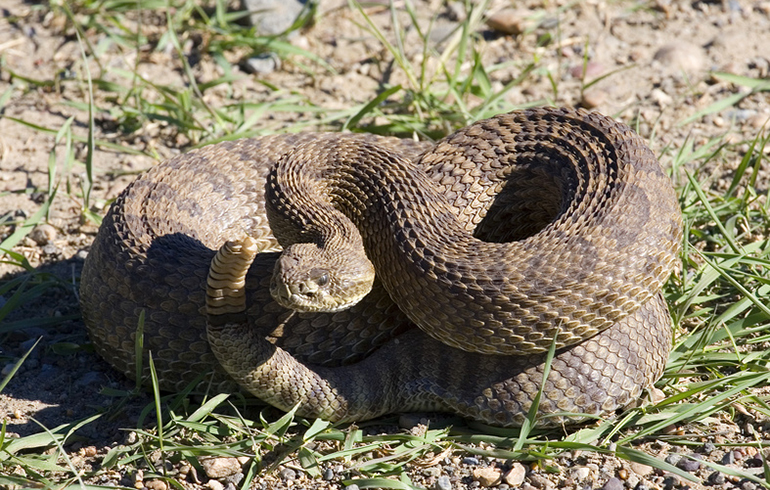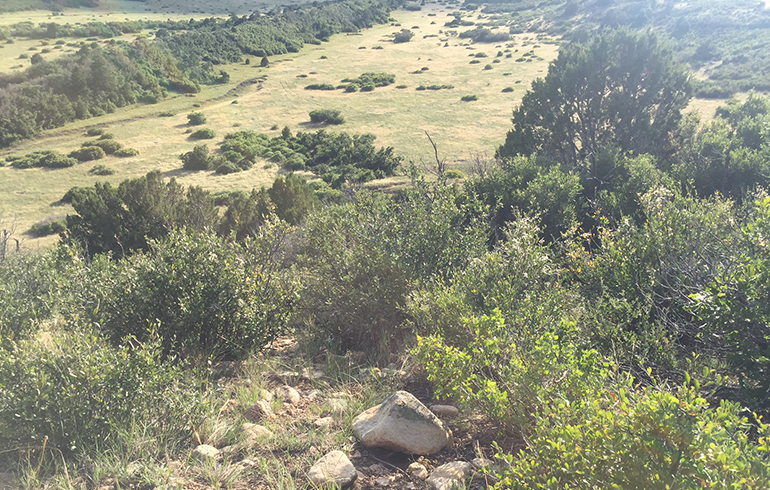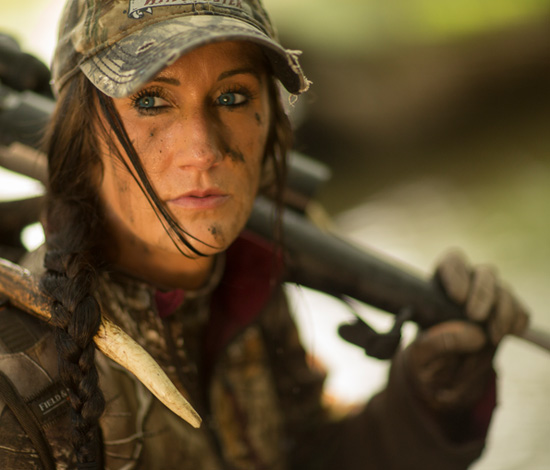Snakes and Early Season Hunting – Things to Watch Out For
As early fall approaches many hunters will be traveling out west for antelope, mule deer, and elk. With months of preparation and excitement leading up to the trip everyone is hoping for a fun and successful hunt.
However, one bad encounter with a rattlesnake can turn a hunting trip into a complete disaster. I’m no expert on rattlesnakes coming from central MN where they are few and far between, but luckily I spend a lot of time around people who are. I’m constantly asking questions and learning everything I can, especially now when I’ve added my new side kick Pork Chop to the mix.

When it comes to snakes, your first line of defense is awareness. Most rattlesnakes don’t want to be bothered and will only strike if they feel severely threatened. Usually they will rattle, and this gives you time to slowly back away. Little baby rattlesnakes are actually the worst as they haven’t learned to control the amount of venom released on a bite. Many people see little snakes and think no big deal, but this is quite the opposite.

If you’re bringing your dog along in the field or in camp, keeping them on a short leash is super important. Most snake bites occur to dogs when they’re running on their own or on a flexi leash. If they’re close to you usually you can help avoid a strike. Several Texas sport shows I’ve been to actually offer snake avoidance training for dogs along with many other dog trainers. They let your dog go into an area with rattlesnakes that are harmless and then give them a shock when they get close so the dog associates the snake with pain. They can also teach them to associate the smell and sound of a snake with danger as well. Most dogs are initially not afraid of snakes because they see them slithering on the ground and just think they’re some sort of toy to play with. If you feel your dog may have been bitten, watch for facial swelling, fang marks, or whimpering from your dog. Time is critical, so try to be aware and get them to a vet immediately.

Regardless if it’s you or your furry friend that got bit one of the most important things to do is try and remain calm. Don’t get your adrenaline and blood pumping as that’s only going to move the venom through your system faster. People have often thought that sucking the venom out is an option, however this will not do any good so don’t waste your time trying. The best thing to do is stay calm, and seek medical attention as quickly as possible. One tip is to let them know you’re coming. This way they can tell you if they have an anti-venom in store or direct you to the closest location that does.
While researching this topic I actually learned that dogs can get a rattlesnake vaccine that will buy you a little more time in the field. This dos not cover every type of venomous snake, but you can talk with your vet about what snakes are in your area and see if this would be helpful. The vaccine is very affordable and will increase their chances of survival if bitten in a remote location and also helps minimize pain and swelling. It’s still highly recommended to get them to a vet as soon as possible, however it buys them time and also lowers the amount of anti-venom needed once bit. This can get very costly for the anti-venom for your pet so this precaution can be very helpful in many ways. Depending on the size of your dog, most dogs get the vaccine with a booster, then get it updated once a year.
Unfortunately for humans there is no such vaccine at this time and it’s hard to believe how many places still don’t even carry anti-venom. Most people will survive a bite, however being cautious is your best bet. If you’re stalking and crawling through snake country put your gun in front of you as you crawl so your face isn’t the first thing to encounter a snake. Last year in Montana while belly crawling up on an antelope my guide and I crawled right up on a big rattler and luckily we were both able to slowly back out without any trouble. I also like to wear higher boots in the field just in case I would happen to step right on a snake. Most snake boots are very uncomfortable that I’ve tried but this may be a good option when you’re hunting in a snake infested area. Always watch when stepping over logs or rocks, and check your ground blind before entering! The last thing you need to do is get into a dark ground blind with all your gear and step right onto a snake. It only takes a few seconds, so shine a light around just to be sure before entering.
Overall we can all live and hunt around snakes, but you do have to be careful. Sometimes just being aware is your best line of defense and can truly make or break a hunt.




